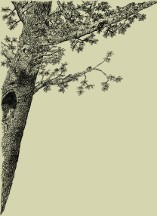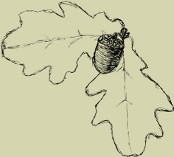42 41 40 39 38 37 36 35 34 33 32 31 30 29 28 27 26 25 24 23 22 21 20 19 18 17 16 15 14 13 12 11 10 9 8 7 6 5 4 3 2 1
Zeszyt 30 (1999)
The beginnings of the science of wood chemistry in Poland can be traced back to seven volume works by Aleksander Chodakiewicz: “Chemistry”, volume five — “Chemistry of plants” (1817), and later to two volume handbook of organic chemistry by Jakub Natanson (1857 and 1858). In the end of the nineteenth century professor of Lvov Technical University Bronisław Pawlewski worked on chemistry of wood. After return of Polish independence new research centres and new conditions for development of wood chemistry appeared. In the interbellum period work on chemistry of wood and cellulose in Poland was carried out: in Warsaw by professors Wacław Iwanowski and Walenty Dominik and in Poznań by professor Jan Wiertelak and assistant professor Aleksander Nowakowski.
Key words: Aleksander Chodakiewicz, Jakub Natanson, Bronisław Pawlewski, Wacław Iwanowski, Walenty Dominik, Jan Wiertelak, Aleksander Nowakowski
In this study was examined lifting the spindle axis of prototype circular saw aerostatically beared in dependence upon the pressure changes of air supplying the bearing. Preliminary comparative studies were made of values of the effective vibrations of accelerations, and displacements on the supports of rolling- and aerostatic bearings.
Key words: aerostatic bearing, circular saw, spindle, vibrations, noise
A dowel joint with a multigroove dowel embedded into pine wood by means of a polyvinyl acetate glue was investigated. The dowel diameter, the depth of dowel embedment and the dowel-hole clearance were variable factors. The regression formulas for load capacity and birch dowels were calculated by using a selected plan of tests.
Key words: dowel joint, pine wood, multigroove dowel, load capacity
This paper is an attempt to state to what degree thickness the tree expressed by the breast diameter, and also the length of the living crown, area of its projection, and number of the whorls of living branches, are conditioning the share of sapwood and heartwood in the volume of merchantable bole. Investigated were pine, which were grown in conditions of fresh mixed broadleaved forest.
Key words: sapwood, heartwood, whorl of branches, crown projection area
The subject of the examination were tribological behaviour and wear of steel knives during peeling of beech wood and the effect of the tools surfaces modification with CrxN thin layer onto these properties. CrxN layers were deposited with the use of triode reactive cathode sputtering method. Chemical content of the deposit was estimated using EDS method and its phase content was determined using XRD method. The experiment was conducted on home-made peeling laboratory Micro-lathe apparatus. The friction coefficient was measured in situ.
The reduction of the cutting edge was measured with an optical microscope perpendicularly to the clearance face along cutting edge from a base line.
Key words: PVD, CrxN, knife, wood peeling, wear resistant, industrial applications
In this paper characterised was structure of Scots pine (Pinus sylvestris L.) timber from unripe forest stands, which were grown in conditions of mixed broadleaved forest. This macrostructure was expressed by average width of growth rings, width and share in annual increment of summer wood, share of sapwood and heartwood in the volume of tree stems.
Key words: fresh mixed broadleaved forest, width of growth ring, sapwood, heartwood, volume of stem
One of the environments in which wood can survive for a long time is water. The subject of the investigations was oak wood taken from a bridge pine over 160 being in use. In spite of visible decomposition of the grey schedule the interior of wood remained in good condition. The damage of cellular walls caused by hydrolytic decomposition in the while sample was particularly mineralized in external zone. This can be started on the basis of the enlarged content of calcium, magnesium and iron which is responsible for the change of the natural colour of wood into black.
Key words: oak wood, water environment, mineral substance, iron, wood color
The scope of this paper was to adapt the proposed theoretical assumptions to the description of the results of experimental research carried out on samples of pine sapwood on which variety state of stress was exerted and which, at the same time, were changing their moisture content. The results indicate that the theory gives a wood description of the radial deformation of wood subjected to compression. Greater differences appear between the theoretical description and the experiment concerning tangential deformation.
Key words: tension, compression, wetting of stressed wood, physical relations, pine sapwood
Permalyne-modified HM adhesives, independently on base polymers (KPA-1, KPA-3), were more heat resistant, and 5% mass decrement proceeded in higher temperature (325-345°C) in comparison with unmodified HM adhesives (225-230°C). It was found that during thermal-accelerated aging of adhesive based on KPA-1 modified with permalyne, shearing strength reduction was not significant.
Key words: thermoplastic polymer, copolyamide, modificator, HM glue, thermogravimetry (TG), joint strength
Studied were shearing strength and elasticity of glue lines from oak wood glued with the use of assembly PVAC adhesives. Shearing strength of glue lines was made with the use of tension method accordingly to the PN-EN 205 standard and by compression loading accordingly to the PN-B-03156. The elasticity of glue lines in angle joints was determined through static and dynamic loads bending forces, acting on the arm with the length of 350 mm. Dynamic loads were exerted in the cyclic way at values being properly 20, 40 and 60% of destructive loads. All measurements were conducted with the use of testing machine ZWICK 1445 with proper equipment.
Key words: oak timber, PVAC adhesive, glue line, shearing strength, static loading, dynamic loading, elasticity















 Pobierz PDF
Pobierz PDF